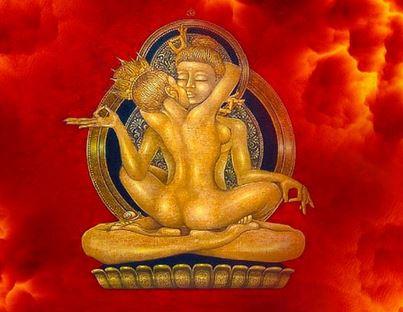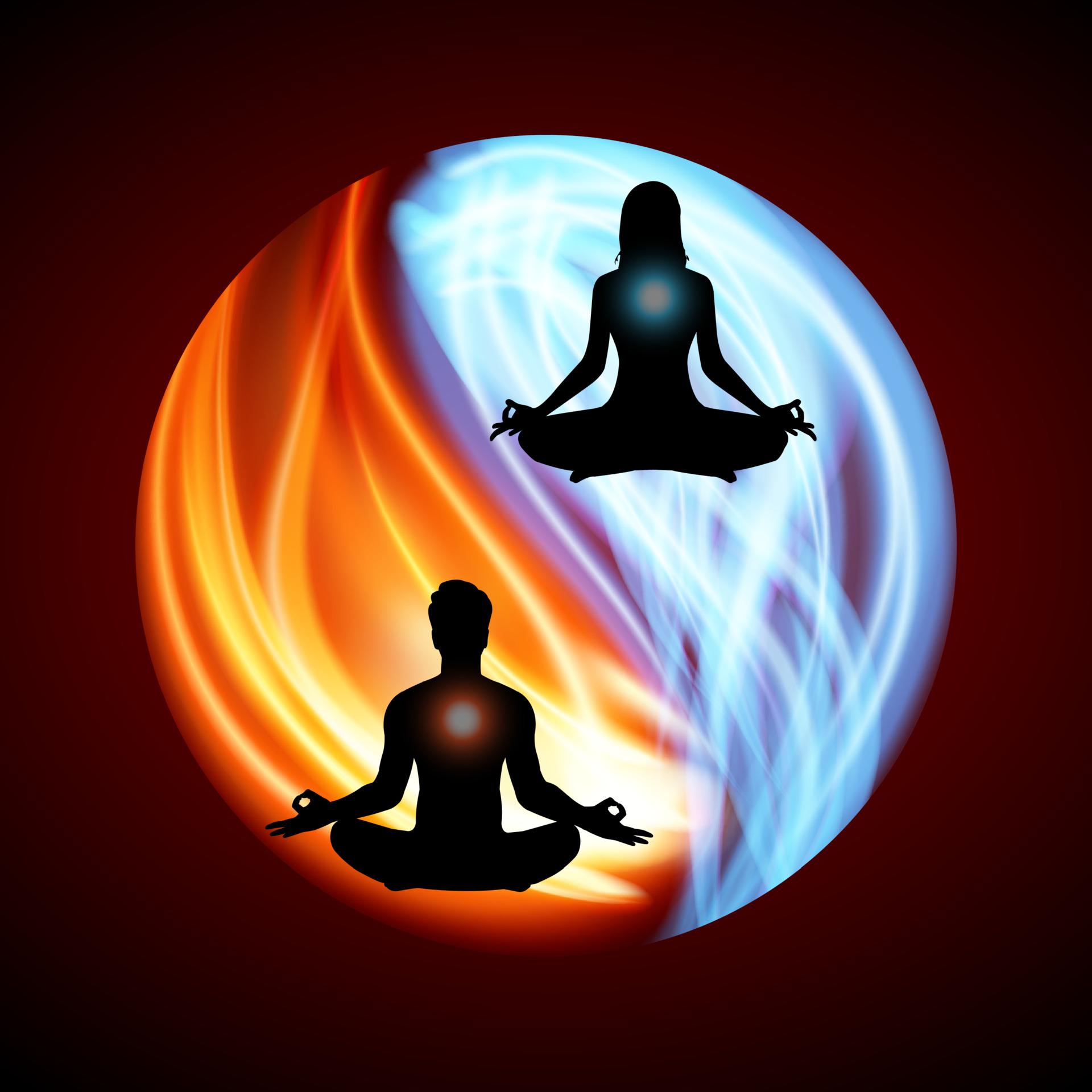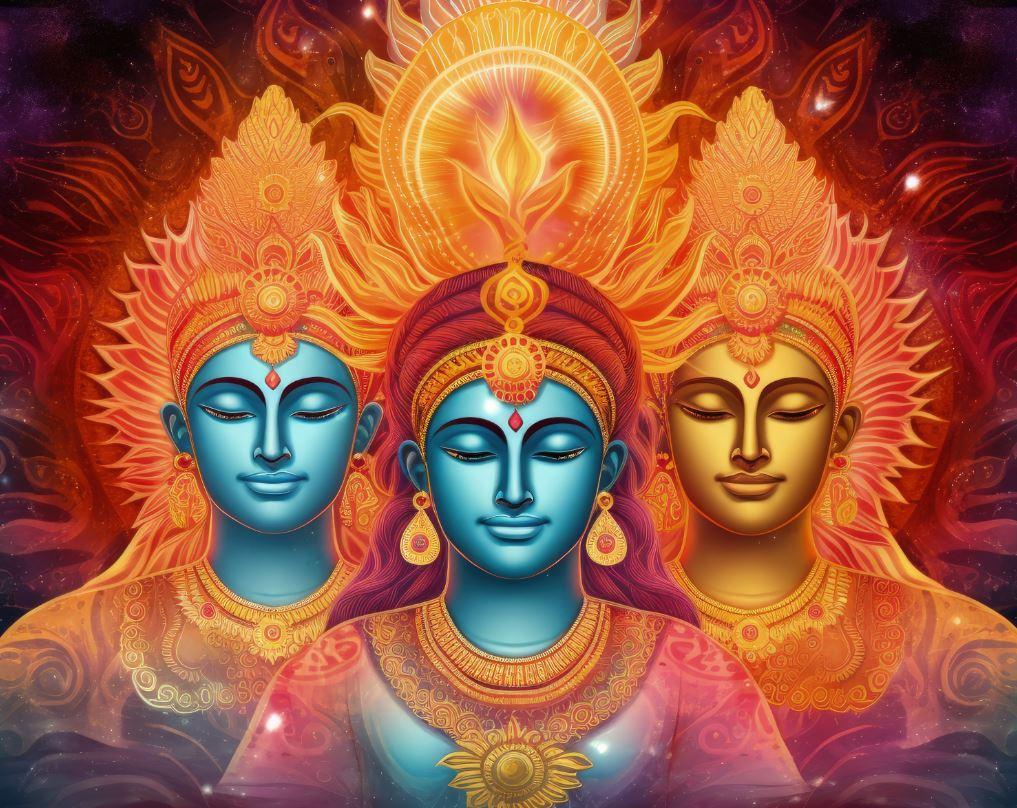
🧵 What Is Tantra?
At its core, Tantra is a spiritual philosophy and set of practices that originated in India, rooted in Hindu and Buddhist traditions. The word tantra comes from the Sanskrit root "tan" (to stretch or expand) and "tra" (tool or instrument), so it roughly means:
🔹 "A tool for expansion" or "weaving/looming energy and consciousness together."
Tantra is about expanding awareness—through body, mind, energy, and even everyday life—to achieve spiritual realization.
🕉️ Two Main Branches
1. Hindu Tantra
-
Tied to Shaivism, Shaktism, and Vaishnavism
-
Emphasizes chakras, mantras, mudras, and ritual worship (often of the Goddess, Shakti)
-
Uses powerful symbolic systems (like yantras and mandalas)
-
Focus on kundalini energy rising through the spine
2. Buddhist Tantra (Vajrayana)
-
Found in Tibetan Buddhism
-
Focuses on deity yoga, visualization, mantras, and esoteric rituals
-
Aims for rapid enlightenment through intense and skillful means
💫 Core Themes
-
The body is sacred – not a prison for the soul but a vehicle for awakening.
-
Desire can be transformed – rather than rejected, it can be used skillfully as fuel for awakening.
-
Non-duality – ultimate truth is beyond opposites: masculine/feminine, spirit/matter, sacred/profane.
-
Shiva + Shakti – symbolic of consciousness and energy, their union reflects enlightenment.
🧘♂️ Tantric Practices (Not Just Sex!)
People often think "tantra = sacred sex," but that’s just a small sliver.
Here’s what authentic Tantra may include:
-
Mantras – sacred sounds to tune your energy
-
Mudras – hand gestures that shift awareness
-
Yantras – geometric diagrams used for meditation
-
Pranayama – breathwork to awaken subtle energy
-
Rituals – offerings, visualizations, initiations
-
Meditation & deity worship – invoking archetypal forces
Yes, sexuality can be part of Tantra, but it’s symbolic and ritualized. In left-hand paths (Vamachara), it’s used in specific, sacred ways to break ego and duality—not for pleasure alone.
❤️ Neo-Tantra (Modern Western Versions)
What most people call "tantra" in the West is often neo-tantra:
-
Focuses on intimacy, connection, conscious sexuality
-
Blends Eastern philosophy with Western therapy and embodiment practices
-
Useful and healing—but not the full traditional path
🌌 In Summary
Tantra isn’t about rejection or repression—it’s about integration, awakening, and sacred embodiment. Whether it’s in a temple, a meditation cushion, or an intimate moment, the tantric path asks:
"Can you see the divine in this too?"
🧘♂️ Mystical Tantra: The Path of Inner Alchemy
In its esoteric and mystical form, Tantra isn’t primarily about sexuality, but about awakening the Divine within—often described as the union of Shiva (pure consciousness) and Shakti (cosmic energy).
It’s about transcendence through immanence—accessing the Infinite through the finite.
🌀 Core Mystical Practices in Traditional Tantra
These practices aim to purify the subtle body, activate kundalini energy, and merge the self with the Absolute:
1. Kundalini Awakening
The dormant spiritual energy coiled at the base of the spine (Muladhara chakra)
Practices aim to awaken it and raise it through the chakras to the crown (Sahasrara)
Techniques: Breathwork (pranayama), mantra, bandhas (locks), mudras, and deep meditation
2. Mantra Japa (Chanting Sacred Sounds)
Every sound vibration carries a specific spiritual frequency
Mantras invoke divine energies, deities, and awaken latent forces within the psyche
Common: OM, So’ham, Aim Hrim Klim (seed mantras), or deity-specific ones like Om Namah Shivaya
3. Yantra Meditation
Geometric diagrams that represent the energy body or cosmic forces
Meditating on a yantra, especially the Sri Yantra, tunes your energy field to universal harmonics
A visual entry into the non-dual state
4. Tattva Shuddhi (Elemental Purification)
A subtle purification practice found in Tantra and Kriya Yoga
You visualize and purify the five elements (earth, water, fire, air, space) within your body
Leads to deep stillness, clarity, and alignment with cosmic forces
5. Deity Yoga (Bhavana or Dhyana)
Visualizing yourself as a deity (e.g., Kali, Shiva, Tara)
You don't worship the deity as separate—you become the deity to dissolve the ego
Used especially in Vajrayana Buddhism and Shakta Tantra
6. Bindu Visualization
Focusing on the bindu point (a subtle dot symbolizing unity or the seed of all manifestation)
Often done at the Ajna (third eye) or Sahasrara (crown) chakras
Leads to a state of non-dual absorption (samadhi)
7. Chakra Sadhana
Meditation and energy work centered on the 7 chakras of the subtle body
Each chakra is associated with a sound, color, deity, and specific traits or challenges
Balancing them refines consciousness and supports kundalini movement
8. Inner Union (Maha Mudra or Shakti-Shiva Union)
A mystical process where the inner masculine and feminine energies unite
Not necessarily sexual—it’s the inner marriage of stillness (Shiva) and movement (Shakti)
Brings about states of ecstasy, bliss, and enlightenment
🕯️ Mystical Mindset in Tantra
True tantric mysticism is direct, intimate, and radical. It asks:
Can you stay awake in the body?
Can you experience God not in some faraway heaven but in your breath, your senses, your longing?
Can you dissolve the illusion of separateness through presence and surrender?
🧚 Bonus: Daily Tantric Ritual (Simple but Mystical)
Here’s a modern blend you can try:
Create a sacred space – candle, incense, yantra or image
Sit in stillness – align your spine, breathe slowly
Chant a mantra – like Om Aim Hrim Klim Chamundayai Viche (for the Goddess)
Visualize – your body as light, heart as a lotus, inner energy rising
Feel the union – let go of separation; feel yourself as both the worshipper and the divine









